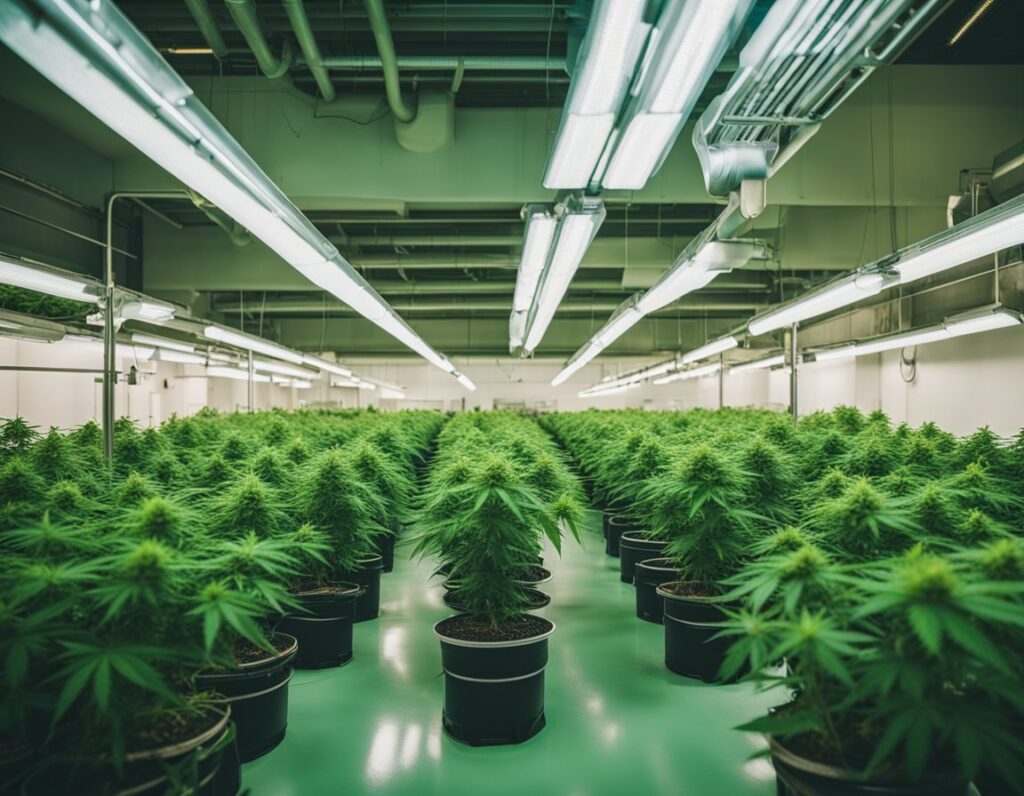
Tips to prevent mold when growing cannabis are especially important when cultivating marijuana seeds in Vancouver’s humid climate. Mold poses a significant risk in cannabis cultivation, particularly due to its potential to destroy crops. By understanding the different types of mold and implementing strategies to control humidity, airflow, and choosing mold-resistant strains, growers can minimize the chances of mold development and protect their marijuana seeds in Vancouver. Recognizing and addressing mold issues early is vital to ensure a successful harvest.
Several mold types can affect cannabis plants, each with specific characteristics and consequences:
Understanding these mold types is crucial for implementing prevention strategies that protect your crop.
Spotting mold in your cannabis plants early can save your harvest. Here are some signs to look for:
Regular inspections, particularly in high-humidity conditions, are essential. Early detection enables you to take immediate action, such as removing affected parts and adjusting environmental conditions.
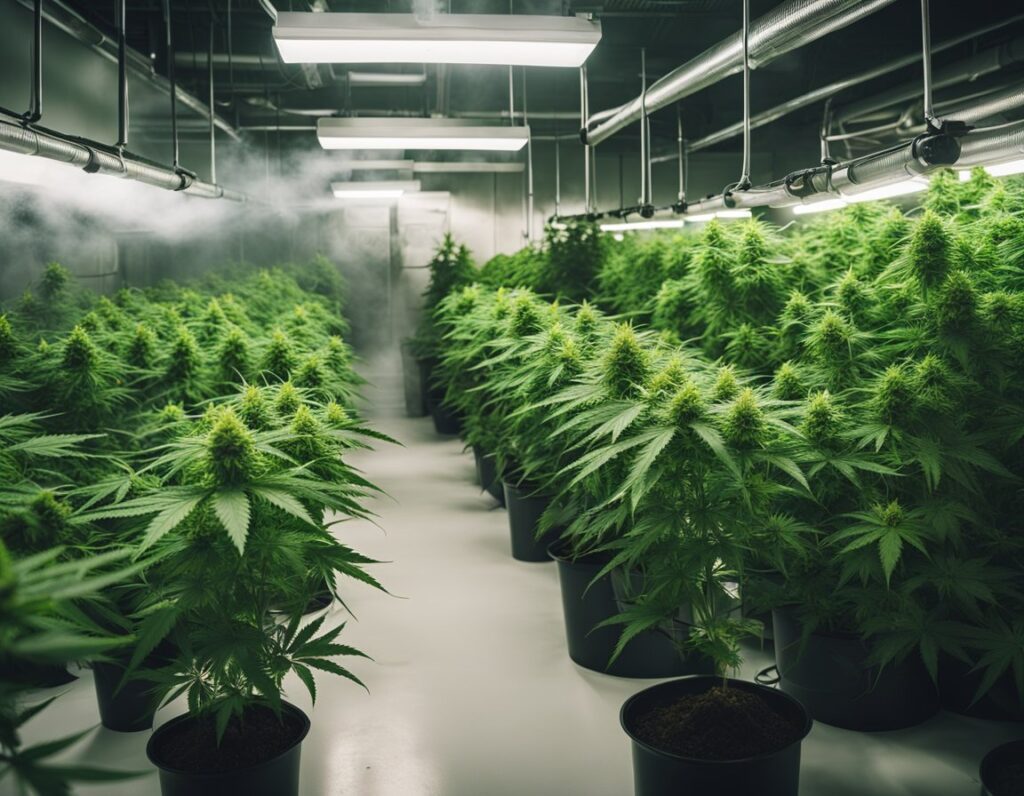
Maintaining optimal conditions is crucial for preventing mold growth when cultivating cannabis. Focusing on humidity levels and ensuring effective air circulation will significantly reduce the risk of mold infestations.
To prevent mold, aim for humidity levels of 40-55% during the flowering stage. High humidity can lead to mold development, particularly in cooler environments like Vancouver.
Temperature should also be monitored, ideally kept between 20-24°C (68-75°F). Keeping your growing area clean and free from debris can reduce mold spores.
You can use dehumidifiers in excess moisture situations. Regularly check the moisture content of the soil, as overly damp soil can contribute to mold growth. As plants grow, adjust humidity based on their specific needs.
Good airflow is essential in cannabis cultivation. Proper air circulation helps keep humidity in check and prevents stagnant air, which promotes mold growth.
In your grow room or greenhouse, ensure there is adequate space between plants. This spacing allows air to flow freely and minimizes contact that can enhance mold transmission.
Utilize fans strategically to promote even airflow. Consider installing exhaust systems that can help remove humid air. Vent windows or vents can also aid in bringing fresh air into your grow space, particularly during high humidity days.
Implementing these practices effectively reduces the chances of mold, allowing your cannabis plants to thrive.
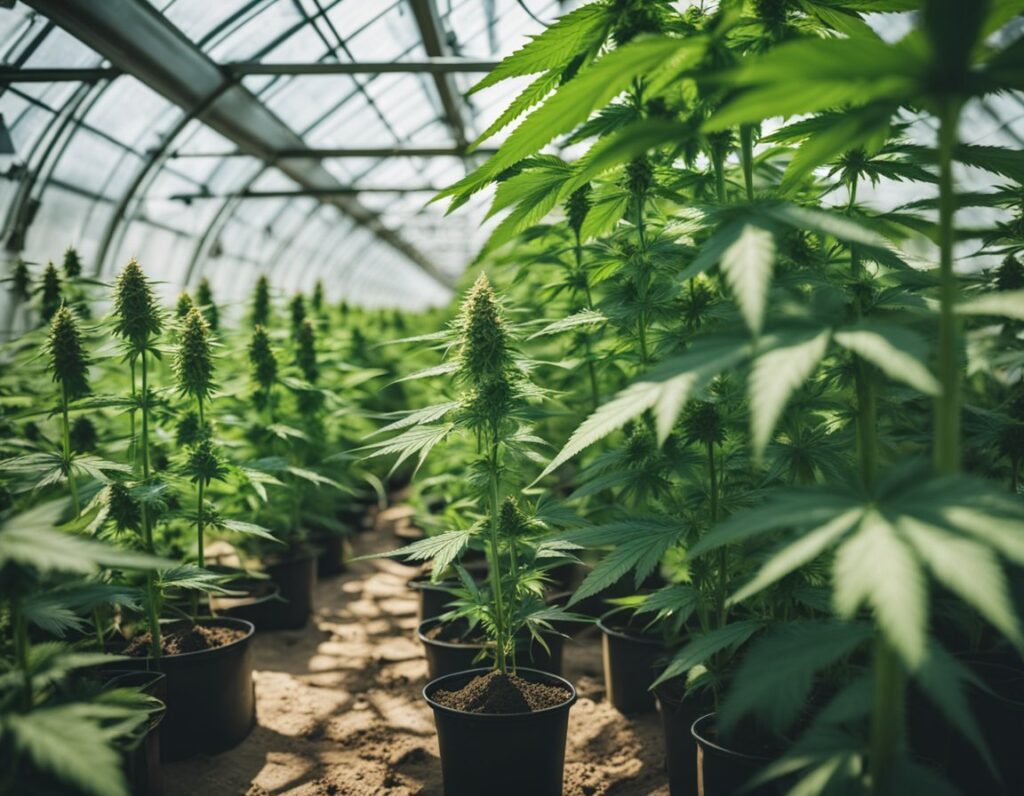
Selecting the right cannabis strains and preparing suitable soil are crucial steps in preventing mold growth during cultivation. Focus on resistant strains and a well-draining soil mix to create an environment that reduces moisture and promotes healthy plants.
When selecting cannabis strains, look for those known for their mold resistance. Some notable strains include:
Consider autoflowering strains as they tend to mature faster and can be harvested before the peak mold season. Choosing the right strain tailored to Vancouver’s humid climate can significantly improve your chances of a successful harvest.
Soil selection plays a vital role in mold prevention. Aim for a soil mix that promotes drainage and aeration. Here’s how to prepare an effective soil mix:
Regular monitoring of moisture levels is essential. Avoid overwatering, and consider using fabric pots, which enhance air circulation to the roots. A well-prepared soil mix creates an environment less conducive to mold and helps your cannabis thrive.
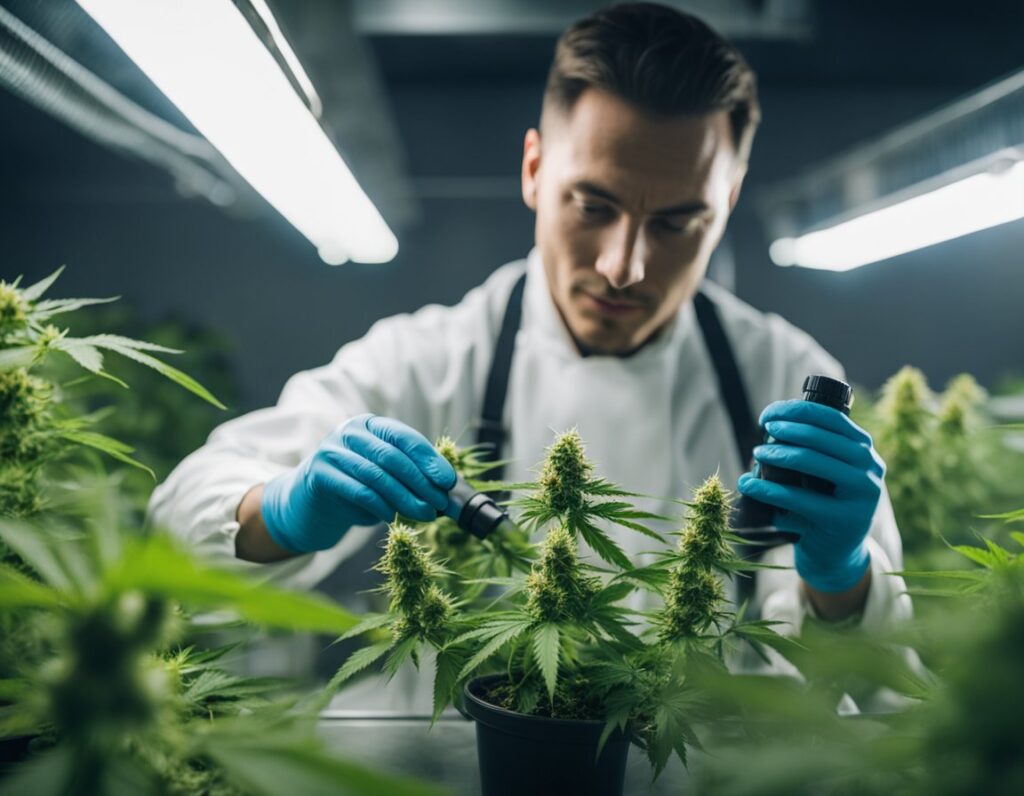
Maintaining a mold-free environment requires consistent care and proactive measures. By implementing routine checks and ensuring proper treatment of any infected plants, you can significantly reduce the risk of mold developing in your cannabis grow area, especially when considering how to avoid mold growing in Vancouver’s often humid climate.
Conduct regular inspections of your plants and grow room. Look for signs of mold, especially in shaded or densely packed areas. Maintain adequate air circulation using fans to prevent humidity buildup. Proper ventilation is crucial; ensure that exhaust fans operate efficiently.
Cleaning your grow space is vital. Wipe surfaces down regularly with a diluted bleach or alcohol solution. This practice helps eliminate spores that could lead to mold growth. Keep all tools and containers sterile and dry.
Utilize neem oil as a preventive measure. Spraying your plants with neem oil can deter mold and pests. Ensure that you apply it during the cooler parts of the day to prevent leaf burn. Additionally, if you’re growing indoors, adjust the humidity levels to between 40%-60% for optimal health.
If you notice signs of mold on your plants, act quickly. Remove any affected leaves or buds and discard them immediately to prevent spread. Ensure you wear gloves and dispose of the material safely.
For small patches of mold, using a diluted neem oil solution can help. Spray the infected area, ensuring even coverage. Monitor the treated plants closely for improvements or any new mold formations.
In cases of severe infestation, consider removing the entire affected plant to safeguard surrounding crops. Proper storage of harvested buds is also essential. Ensure they are dry before sealing them in airtight containers. This prevents excess moisture and minimizes the risk of mold during storage.
Consistent monitoring and quick responses are critical to maintaining a healthy, mold-free cultivation environment.
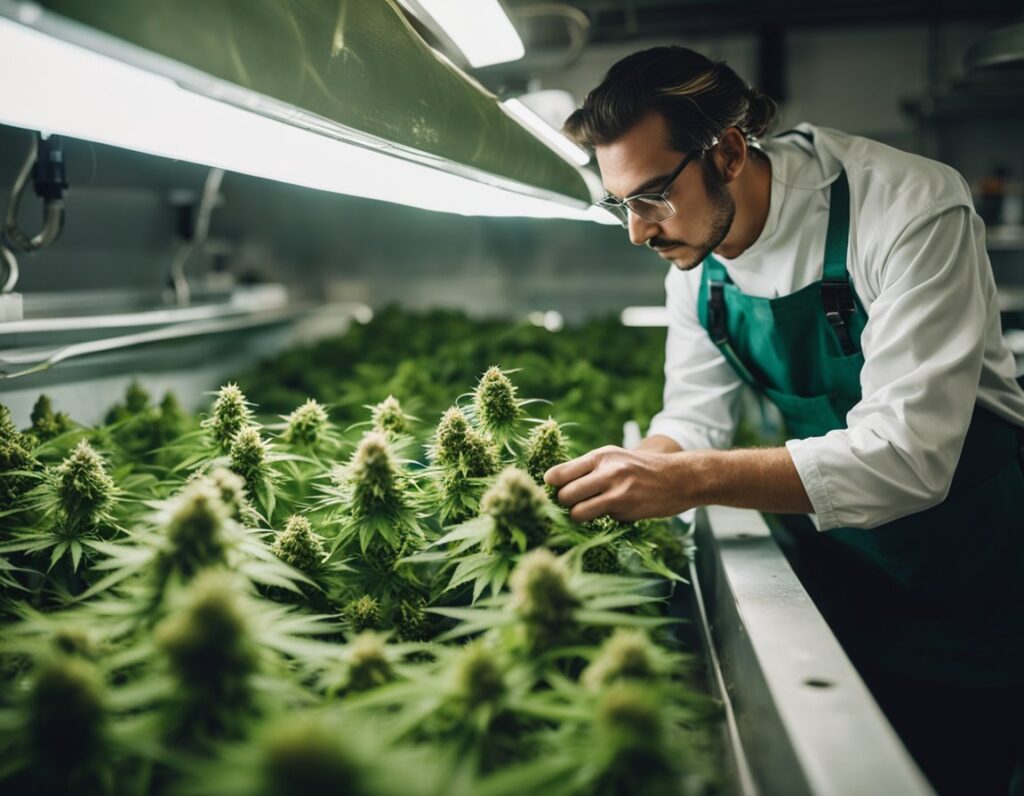
To ensure a mold-free harvest, maintaining proper humidity during curing, using airtight containers for storage, and regularly inspecting your buds for signs of mold are critical. Tips to prevent mold when growing cannabis also include focusing on good airflow and proper storage conditions to keep your cannabis mold-free and safe for consumption.
Curing is a vital step that enhances flavor and preserves cannabinoids. Begin by trimming your cannabis buds carefully to remove excess leaves. This helps reduce moisture trapping.
Place the buds in airtight containers, such as glass mason jars. Fill the jars to about 75% capacity, leaving space for air circulation. Store them in a cool, dark place, ideally around 60-70°F with humidity levels between 55-62%.
Open the jars daily for the first week to release excess moisture. This practice, called burping, helps prevent mold growth. Use humidity packs if needed to maintain optimal humidity levels. Proper curing can take 2-4 weeks, but it’s worth the time for quality buds.
Once your buds are cured, proper storage is essential to keep them mold-free. Always use airtight containers to minimize air exposure, which can lead to mold. Glass jars are an excellent choice due to their non-reactive nature.
Store your jars in a cool, dark location to protect the cannabis from light degradation. Ideal conditions should be around 60°F and 55-62% humidity to maintain freshness.
Consider using humidity packs within the jars to regulate moisture levels. Regularly check your cannabis for any signs of mold, and ensure your storage containers are clean and dry before placing the buds inside. This proactive approach will help keep your cannabis molds free and enhance the overall quality.
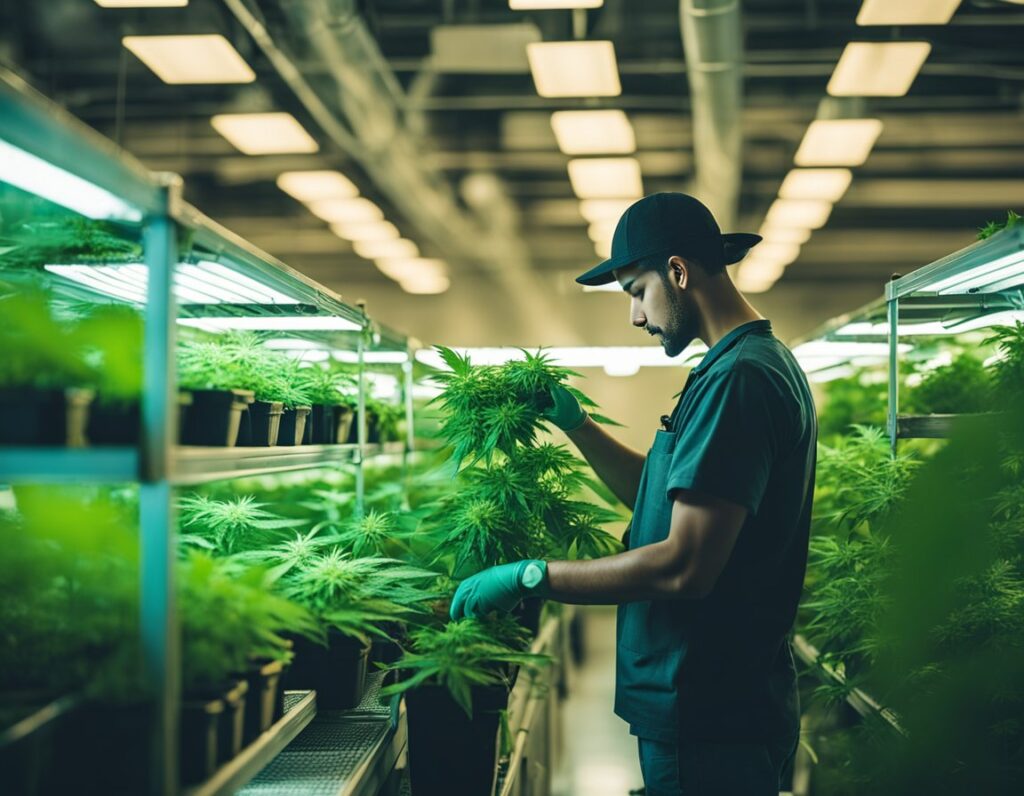
Consuming moldy cannabis poses several health risks. If you smoke or ingest mold-infested weed, you might face symptoms like:
Moldy cannabis can contain mycotoxins, harmful compounds produced by molds. These toxins may lead to severe immune reactions, particularly in individuals with allergies or compromised immune systems.
To minimize risks, always inspect your cannabis before consumption. Pay close attention to signs such as:
If you notice any of these indicators, discard the affected product. Proper storage and drying techniques are also essential to prevent mold growth.
When drying your cannabis, ensure adequate airflow and maintain the right humidity levels. Consider using a dehumidifier if you live in a moisture-rich environment.
During the curing process, regularly “burp” your jars to replace humid air with fresh air. This helps reduce the moisture content in the buds, further minimizing mold risks.
Understand that while healthy individuals may experience mild effects from consuming contaminated cannabis, those with allergies or other conditions can have more severe reactions. Prioritize your health by ensuring your cannabis is clean and safe for consumption.
Ensuring a mold-free environment when growing cannabis requires specific strategies tailored to your conditions. Here are common questions about preventing mold in cannabis cultivation, particularly suitable for Vancouver’s climate.
To prevent mold, maintain low humidity levels during critical growth phases. Use dehumidifiers and monitor humidity regularly to keep it between 40-60%. Implementing air circulation can also help by reducing stagnant air, which fosters mold growth.
Adequate ventilation is crucial. Install exhaust fans to remove stale, humid air, and use intake fans to bring in drier air. Position fans strategically to ensure even airflow throughout the grow area, preventing any hotspots where humidity can accumulate.
Regularly inspect your plants for signs of mold, including discolored leaves or a musty odor. If detected, promptly remove affected plant parts and improve air circulation. Using fungicides can also help if mold is confirmed.
Yes, some strains are bred for resistance to mold, such as those with tighter bud structures. Look for varieties known for resilience in humid climates, like certain indicas. Research local growers’ recommendations for preferred strains that thrive in the Vancouver region.
For small-scale growers, maintain cleanliness by removing plant debris and using sanitized tools. Consider using natural fungicides as a preventative measure, and avoid overwatering, which increases humidity levels. Regularly check humidity and temperature conditions.
We ship and deliver world wide via USPS and various couriers.
We offer a wide range of secure and anonymous online payment options.
We care about you, our customer. Please contact us with any questions or concerns.
Find out more about the benefits of being a loyal and regular customer.
WE ARE EVERY GROWERS ONE STOP SHOP TO ACQUIRE PREMIUM CANNABIS SEEDS FOR SALE IN THE USA, CANADA AND AUSTRALIA

Farmers Lab Seeds 2024, | All Right Reserved
Seeds are sold as novelty items, souvenirs, and collectibles. They contain 0% THC. We encourage our customers to check the legislation in their Country, State, Province, and Municipality prior to purchasing items from our store. We do not provide growing information.
All seeds are sold as hemp, and lab tested under 0.3% THC. This product is not for use by or sale to persons under the age of 21. This product should be used only as directed on the label. It should not be used if you are pregnant or nursing. Consult with a physician before use if you have a serious medical condition or use prescription medications. A Doctor’s advice should be sought before using this and any supplemental dietary product. All trademarks and copyrights are property of their respective owners and are not affiliated with nor do they endorse this product.
These statements have not been evaluated by the FDA. This product is not intended to diagnose, treat, cure or prevent any disease. Individual weight loss results will vary. By using this site, you agree to follow the Privacy Policy and all Terms & Conditions printed on this site. Void Where Prohibited by Law.